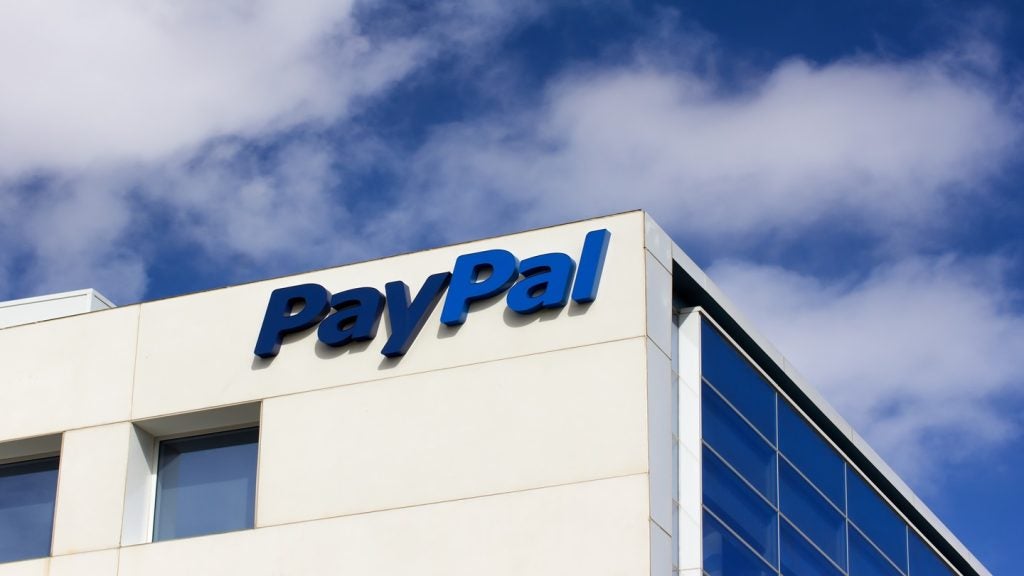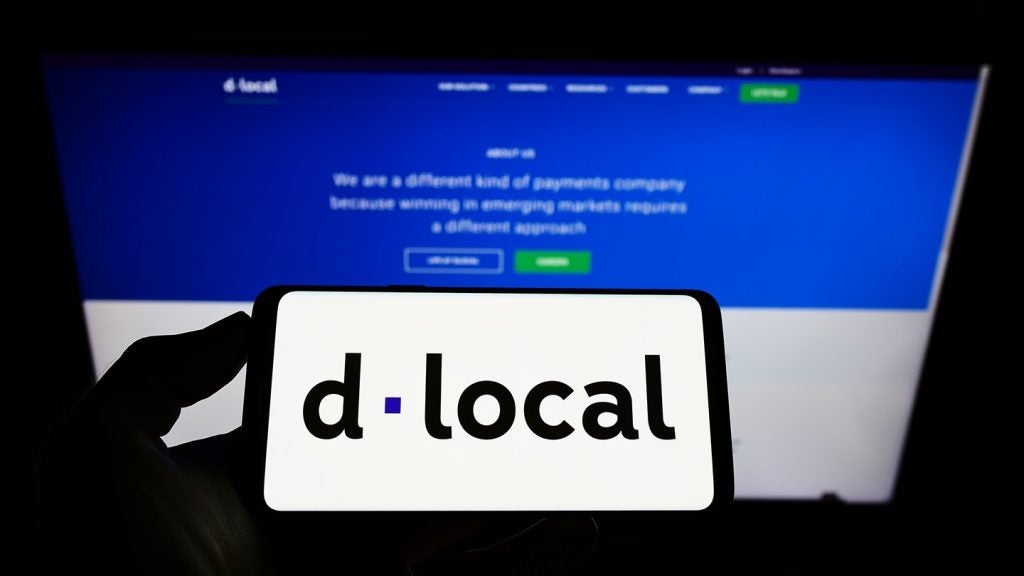Although e-money dominates the non-cash transaction
landscape, Malaysia still represents one of the most profitable
credit card markets in the world. But bank issuers in the country
are switching attention to debit and taking a more segmented
approach to cardholder recruitment than in previous years. Victoria
Conroy reports.

Merchants in Malaysia are something of an anomaly compared to
merchants in other parts of the world, as they have been very keen
to switch from cash to electronic payment forms, having
increasingly recognised the hidden costs of cash.
As of 2008, there were around 144,897 POS terminals in Malaysia.
Cash still dominates the payment landscape, although its popularity
is definitely on the wane. According to the country’s central bank,
Bank Negara, in its 2008 report, the average value of ATM
withdrawals, which had been on an increasing trend between 2003 and
2006, has remained relatively flat since then, standing at MYR460
($129) in 2008.
Cheques, while accounting for approximately 90 percent of total
non-cash retail payments value in 2008, also appear to be losing
their appeal.
According to the central bank, the ratio of cheques to GDP has
fallen from 334.9 percent in 1998 to 237.8 percent in 2008.
However, although cheque numbers are also declining, the value of
cheques written per capita has only recorded a marginal increase of
0.7 percent in 2008, compared to 16.5 percent in 2007.
Profitability and regulation
How well do you really know your competitors?
Access the most comprehensive Company Profiles on the market, powered by GlobalData. Save hours of research. Gain competitive edge.

Thank you!
Your download email will arrive shortly
Not ready to buy yet? Download a free sample
We are confident about the unique quality of our Company Profiles. However, we want you to make the most beneficial decision for your business, so we offer a free sample that you can download by submitting the below form
By GlobalDataMalaysia’s payment card market continues to be one of the most
profitable in the Asia-Pacific region, as card numbers and
receivables have seen a big spike upwards over the last three years
due to issuers placing greater emphasis on the mass market segment
and expanding aggressively as the market heats up.
But this rapid growth is also causing increasing concerns about
rising debt levels, and regulations have been put in place that may
put the brakes on further growth. From a card base of just under
three million in 2002, the number of credit cards has more than
tripled to 9.67 million as of March 2009, with credit lines more
than quadrupling from MYR24.3 billion in 2002 to MYR103.8 billion
in the same period.
In tandem, the value of credit card purchases as a percentage of
GDP has risen from 3.5 percent in 2002 to 7.6 percent in
2008.
At the end of 2008, total outstanding credit card debt in Malaysia
stood at MYR23 billion, which is concerning regulators as to the
level of indebtedness now facing Malaysian consumers. Of the nearly
10 million credit cardholders in Malaysia, only around 30 percent
pay off their balance in full every month.
A 2008 report from Bank Negara shows that credit card
non-performing loans (NPLs) have risen upwards, with the overall
household NPL ratio increasing by 0.1 percentage points to 4.2
percent, while loans in arrears rose to account for 1.3 percent of
total gross loans.
As such, a recent raft of measures has been implemented to curb
fees and interest rates, all of which are expected to take a bite
out of issuer profits.
In March 2009, interest rates on outstanding credit card balances
was reduced by between 0.5 percent and 1.5 percent, while those
considered ‘Tier 1’ credit cardholders – those who make 12
consecutive minimum monthly repayments – saw interest rates reduced
from 15 percent to 13.5 percent.
‘Tier II’ cardholders – those who make minimum repayments in 10
months out of a 12-month cycle – had interest rates reduced by 1
percent to 16 percent per annum. The interest rate for other
cardholder categories was cut by 0.5 percent to 17.5 percent.
In June 2009, the Association of Banks in Malaysia (ABM) announced
that from 1 July 2009, all commercial banks would reduce charges
for late payment from a maximum of MYR75 to a maximum of MYR50, and
from a minimum of MYR10 to MYR4.
Credit cardholders will also be required to pay a minimum of MYR5
or one percent of their total balance outstanding as of the
statement date. In addition, credit cardholders will be given a
minimum three-day grace period from the due date of payment.
Some consumer groups are pushing for late payment fees to be
scrapped altogether but the ABM has justified the charges on the
basis of the convenience credit cards offer to consumers and the
risk that issuers bear when extending credit to consumers.
Designs on debit
Despite credit cards still growing strongly, debit cards have
enjoyed the biggest growth surge over the past year, with
transaction numbers jumping by 73.5 percent in 2008, in tandem with
the growth of Malaysia’s payment terminal infrastructure.
The number of terminals that accept domestic PIN-based ATM cards
rose from just under 35,000 in 2007 to over 67,000 by 2008. But it
is consumer education that appears to be making the biggest
difference along with an awareness that the fees associated with
credit cards are non-existent on debit cards.
In August 2008, MasterCard made its entry in Malaysia’s debit card
space after MasterCard issuer RHB Bank began offering two new debit
products in the country. RHB Bank is one of five banks that will be
issuing MasterCard-branded debit products – the others are Affin
Bank, EON Bank, Public Bank, and Standard Chartered.
MasterCard is hoping to persuade the over 15 million ATM
cardholders in Malaysia to switch to fully-featured debit cards,
and has cited a potential debit cardholder base of 10
million.
RHB Bank has opted to issue MasterCard debit cards with the
multi-application EMV combi ‘mc2’ design as a consumer pull, and is
hoping to issue around 200,000 debut cards to both new and existing
customers in the first 12 months after launch.
In June, Visa launched a nationwide prize promotion campaign in
Malaysia to promote debit card usage for everyday spending.
Although debit is already an established product in the country,
banks and payment networks are aggressively marketing it in
response to slowing credit card spending as a result of the global
economic slowdown, and as a budgeting tool for cost-conscious
consumers.
In January this year, one of the country’s largest credit card
issuers, Maybank, announced it had signed over one million
customers for its new Visa debit proposition, ahead of its one-year
target.
Payment innovation
Malaysia was the first country in the world to migrate to EMV
technology, and as a result, fraud losses have dropped
significantly over the last few years, accounting for only 0.001
percent of total non-cash transactions in 2008. Credit card fraud
losses accounted for less than 0.04 percent of total credit card
transactions during the year, with 55 percent of total credit card
fraud losses attributed to card-not-present (CNP)
transactions.
As Malaysian card issuers compete to attract and retain customers
in what is a very competitive market, differentiation and
value-added services have become the industry buzzwords. Issuers
are increasingly turning to technology innovation to appeal to the
country’s young, affluent and well-educated demographic.
Contactless and mobile payments are being rolled out extensively
across Malaysia. In April 2009, the world’s first commercial
near-field-communication (NFC) payment service for mobile phones
was launched by Visa in conjunction with handset maker Nokia and
Maybank.
The Maxis FastTap service lets customers use Nokia NFC phones to
make Visa payWave contactless transactions at over 1,800 Visa
payWave merchant locations and pay for tolls, transit, parking and
theme park charges at over 3,000 locations across the
country.
Maybank Visa account holders can download their Visa payWave credit
account details directly to their Nokia 6212 handset over the Maxis
wireless network. Once the account has been personalised on the
phone, account holders can then begin to make purchases.
Stuart Tomlinson, country manager for Malaysia at Visa, said:
“Malaysia was the first place in the world where Visa trialled its
Visa payWave technology, so it is only fitting that it is now the
first country in the world to offer Visa payWave on an NFC-enabled
mobile phone on a commercial basis.”
Prepaid and e-money

It is e-money that is taking the lion’s share of non-cash
transactions in Malaysia. Overall in 2008, e-money represented more
than half of non-cash transactions performed in the economy, with
684.9 million transactions performed with a value of MYR2.1
billion, an increase of 11.7 percent and 25.6 percent respectively
from 2007.
The Touch ‘n Go prepaid transit fare payment scheme has been in
existence since 1997 and has acted as a template for the
development of further prepaid and contactless transaction
platforms launched in Malaysia.
Bank Negara reported in 2008 that the Touch ‘n Go electronic
payment system is the most preferred cashless payment mode,
handling over 50 percent of cashless payment transactions in the
country. In 2008, Touch ‘n Go processed over 540 million
transactions with a total value of MYR1.6 billion.
There are now around 4.4 million Touch ‘n Go cardholders in
Malaysia, and an additional 1 million MyKad cardholders, along with
685,000 SmartTAG users. According to the scheme operators, an
average of 1 million Touch ‘n Go transactions are performed every
day and Touch ‘n Go transactions are around three times faster than
cash payments when passing through transit or toll payment
points.
In April 2008, Touch ‘n Go incorporated retail payment
functionality into the Touch ‘n Go card, initially for use at a
range of fast food merchants, cinemas and convenience stores. Since
then, retail transactions using Touch ‘n Go have increased
fivefold, with 80 percent of transactions taking place in food and
beverage locations.

Issuers
Maybank
In 2008, Maybank, which had over 1.5 million credit cards in issue
as of March 2009, secured a number of significant deals, including
an agreement with American Express and food company Nestlé to roll
out a distribution card programme, and an American Express platinum
credit card as part of the ‘Centurion’ range of Amex cards. Maybank
is the sole issuer of Amex Centurion cards in the country.
Also in 2008, Maybank partnered with Visa to launch the Maybankard
Visa debit card, Malaysia’s first dual purpose debit card, and the
co-branded Visa Petronas card, which had over 170,000 customers in
the six months since its launch in January 2008.
Maybank also partnered with China UnionPay to enable CUP’s more
than 1.3 billion cardholders to use their card at Maybank
acceptance points in Malaysia.
In June 2009, Maybank and Amex rolled out the Amex-branded ‘Gold’
credit card, offering what is claimed to be the lowest revolving
interest rate at 9 percent per annum. In addition, it offers high
loyalty rewards with cardmembers receiving 5 times ‘Membership
Rewards’ points for every MYR1 charged on groceries, petrol and
telecommunications services through express autopay, and at
selected bookstores.
For all other purchases in Malaysia and around the world,
cardmembers receive double Membership Rewards points for every MYR1
charged.
Cardmembers also enjoy a lifetime annual fee waiver and
complimentary supplementary cards. Maybank is expecting to sign up
at least 150,000 cardholders within a year for the card.
Maybankard ‘Treats’ and American Express ‘Membership Rewards’ are
the leading loyalty programmes in Malaysia, and Maybank has also
implemented contactless technology using Visa’s payWave
functionality and near-field-communication technology.
In 2008, Maybank’s focus on customer growth, retention and loyalty
resulted in a 21.4 percent growth in card receivables to MYR3.2
billion, outperforming industry growth of 10 percent.
Alliance Bank

In September 2008, Alliance Bank launched a MasterCard-branded
debit card, linked to the interest-bearing Alliance Hybrid account.
The card comes in platinum and premium versions for the mass
affluent segments, and a standard format for the mass market.
Alliance Bank claims the card gives the highest cashback percentage
in Malaysia of up to 2 percent on all purchases without a time
limit and regardless of the amount spent. There is no minimal
spending requirement, and the rebate is applicable at all
MasterCard merchant outlets both in Malaysia and abroad. Cashback
amounts are credited into cardholders' Alliance Hybrid
Account monthly statements.
In 2008 the bank also rolled out the ‘You:nique’ Picture card which
comes with a customised value plan offering options of rebates,
rates or rewards.
Standard Chartered
In May 2009, Standard Chartered claimed that its current credit
card market share of five percent (or 500,000 cardholders) would
expand to seven percent over the next two years with the roll-out
of new products such as the ‘JustOne’ card, a combined debit,
credit and ATM card which incorporates rewards and low interest
rates.
StanChart is expecting that the card, aimed at young professionals,
will bring in 50,000 new cardholders over the next year. StanChart
is hoping that such products will appeal to the more than 52
percent of the Malaysian population who are aged 30 and
under.
RHB Bank
RHB Bank currently has a 6 percent market share in credit cards,
with cards in circulation rising to 460,000 in 2008, compared to
330,000 in 2003.
RHB is hoping to boost its market share to 8 percent on the back of
recent credit card co-branding deals with Malaysia Building Society
and AirAsia – August 2008 saw the launch of the RHB-AirAsia
MasterCard credit card, which now has over 50,000 cards in
issuance. RHB and MBS are hoping to issue 20,000 of their
Visa-branded credit cards over the next three years.
All new MBS mortgage customers will be extended an offer to apply
for the new card. Principal cardmembers of the MBSB Visa credit
card will enjoy a waiver of the annual fee in the first year, while
the supplementary card has a waiver of two years.
In the debit card space, in August 2008 RHB launched the
‘Cash-Connect’ and Islamic ‘My Cash-i’ MasterCard-branded debit
cards, both bearing the special mc2 design with a rounded edge.
Both cards can be used on the MasterCard Cirrus and local MEPS
networks. Both cards also come with cashback of 0.5 percent.
RHB also made moves into the business card space with the launch of
the RHB platinum MasterCard business card which comes with flexible
instalment payment plans for purchases, no annual fee and 1 percent
cash rebate on retail transactions.
CIMB Bank
In 2008, CIMB launched a number of new cards including the CIMB
Petronas MasterCard and the exclusive invitation-only CIMB Enrich
World MasterCard, along with a number of affinity co-branded cards
with professional and medical organisations. CIMB also launched its
first Sharia-compliant CIMB Islamic credit card.
The number of credit card applications received through the CIMB
Bank branch network in 2008 was 87 percent higher than 2007. Card
issuing increased by 23 percent and loan growth increased by 19
percent, with card spending rising by 40 percent compared to 2007.
CIMB, which is currently the largest MasterCard issuer, claims to
be the second-largest card issuer in Malaysia.
MBF Cards
MBF Cards is Malaysia’s largest MasterCard merchant acquirer, and
is also a Visa acquirer. MBF Cards issues MasterCard credit, charge
and debit cards.
Over the past year, MBF Cards has concentrated on launching a
series of promotions and prize giveaways to encourage cardholders
to increase the frequency of their spending.
Its ‘Got 5’ promotion let cardholders who spent a minimum of MYR50
have a chance of winning more than 35,000 cash prizes totalling
MYR2.5 million. The contest worked by cardholders checking if the
approval code on their transaction slips ended in a five – if it
did, the cardholder would then SMS the transaction details to a
verification number.
MBF Cards is now seriously looking at online marketing as a new
tool to beat the banks in the saturated market.
In 2008 it launched the invitation-only MBF Cards World MasterCard
for high-end customers, but in May 2009, MBF, which has over
500,000 credit cardholders, announced it would not be targeting
growth in cardholders due to the current economic slowdown, instead
focusing on maintaining and rewarding current customers.
In 2008, MBF posted net profit of MYR70.7 million.
AmBank
AmBank claims to be the fifth-largest credit card issuer with a
market share of 8 percent, and the largest issuer of Islamic
sharia-compliant credit cards, along with being the largest issuer
of prepaid cards.
In 2008 it launched a MasterCard platinum business card, and also
achieved 28 percent growth on merchant billings compared to
2007.
Its NexG range of prepaid and co-branded cards include speciality
cards like the FIFA World Cup-branded cards, the NexG i-Talk cards
and dual cards for Malaysia’s foreign workers.
In June 2009 it launched its latest balance transfer/quick cash
promotion to generate interest and brand visibility and as a method
to acquire new customers and build up credit card
receivables.







